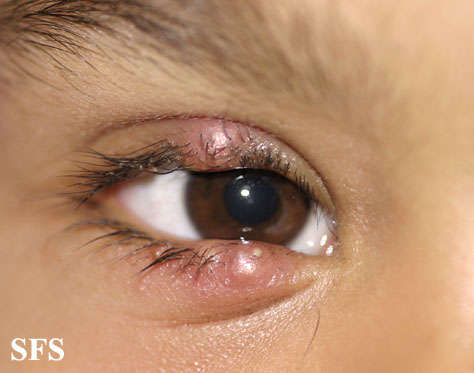Keratoconus is a progressive condition affecting the cornea of the eye. The cornea is the clear window at the front of the eye. It is a curved structure. The precise shape of the curve allows it to act as a lens, projecting an image into the eye. The cornea is made up of bundles of protein called ‘collagen’. These bundles are normally held tightly together by chemical links between the collagen strands. This ensures that the shape of the cornea is constant. In the keratoconic cornea the normal chemical links between collagen strands are deficient, causing the cornea to be unusually elastic. The pressure inside the eye then pushes the cornea into a distorted, conical shape. This spoils the quality of the image projected into the eye, and the vision becomes progressively blurred.
How is keratoconus treated?
Glasses may be sufficient in the early stages of keratoconus, but contact lenses are needed when the cornea becomes so misshapen that glasses are no longer effective in correcting vision. Although soft contact lenses can sometimes be used, contact lenses for keratoconus are usually ‘hard’ gas-permeable lenses. Gas-permeable hard lenses are not always comfortable and may only be worn for a limited number of hours each day, but without them the vision is very blurred.
In some cases, the corneal shape becomes too distorted even for contact lenses to help. Also, scarring may develop, causing vision to become clouded. At this stage, a corneal transplant is usually needed. Corneal transplantation is quite major surgery and carries significant risks.
The transplant stops the keratoconus progressing and provides a clear window into the eye. However, the shape of the cornea is usually far from perfect. Some people will see adequately with glasses after corneal transplantation, but most will still need contact lenses to see well.
Corneal transplants do not last forever and may have to be repeated every fifteen years or so.
C3-R though another non-surgical keratoconus treatment method that can stop keratoconus from progressing to the stage where contact lenses or corneal transplantation becomes necessary but some time even found fruitless .
Homoeopathic Treatment
Though considered as last resort but having very effective treatment , Remedies being mentioned by the stalwarts years ago for distorted cornea has found to be promising for keratoconus . Pulsatila along with Eupharasia eye drop found very usefull . For consultation kindly contact at +91-9810097591.
“Homoeopathy for safe and natural way of cure without side effects”

 October 19th, 2012
October 19th, 2012  Dr Anmol Arora
Dr Anmol Arora  Posted in
Posted in 


